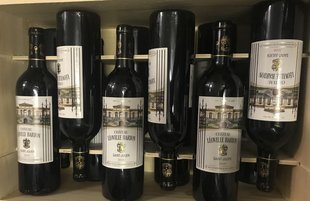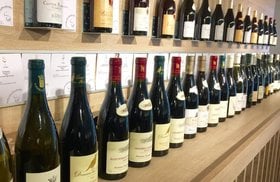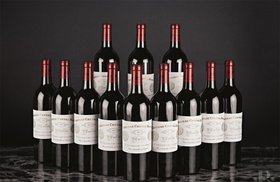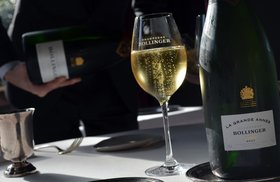Chateau Leoville Barton (Vineyards, Best Vintages, Prices 2025)
Château Léoville Barton, a family-owned, Second Growth Grand Cru Classe vineyard, produces classic terroir-driven Bordeaux wines. The estate is one of the Bordeaux “Super Seconds” and its red wines are on the radar of all serious collectors.
Interestingly, there is no Château on the Leoville estate, and the wines are made at their neighboring property, Langoa Barton.
So what is the secret behind this traditional fine wine? How is it made, and which bottles should you buy?
Let’s find out more about Château Léoville Barton, its vineyards, and winemaking practices. You’ll also discover their best wines you should buy in 2024 and the simplest way to invest in them.
Further reading
- Want to get ahead in the world of wine investing? Get started with this Ultimate Guide on Wine Investment.
- Or perhaps you prefer exploring other enchanting French wineries like Château Cheval Blanc and Château d’Yquem?
A Quick Intro to Chateau Leoville Barton

Château Leoville Barton is situated in the Bordeaux region of France, in the midst of the picturesque Saint Julien appellation. It is considered one of the “Super Seconds”, which are Second Growth Bordeaux that have almost the same quality levels as First Growths.
The estate is owned by the Irish Barton family, who have been crafting wines for 10 generations.
The Château is famous for its two signature labels - the popular Château Leoville Barton and the second wine, La Reserve de Leoville Barton. Both are produced from the Cabernet Sauvignon, Merlot, and Cabernet Franc grape varieties.
Fun fact: Besides wine, the Chateau also produces a unique Bordeaux cask matured whiskey. This is the wine-finished variant of the famous Green Spot Single Pot Still Irish Whiskey.
Let’s take a look at the fascinating origin story of Leoville Barton.
A Brief History Of Leoville Barton

The Barton family established their Bordeaux roots almost three centuries ago.
The birth of Château Leoville Barton dates back to 1725 when the Irish wine merchant, Thomas Barton, set up his wine company in Bordeaux, France. By 1737, he became a well-respected winemaker in the region.
After Thomas passed away, his grandson, Hugh Barton, inherited and expanded the family business.
In 1819, Hugh Barton became the first one in the family to purchase vineyards in Bordeaux. He became the official owner of Chateau Langoa in 1821. Four years later, he bought a part of the Leoville domaine, including Châteaux Léoville Las Cases and Leoville Poyferre, and renamed it, Leoville Barton.
Today, the estate is owned by Anthony Barton, who inherited it in 1983 from his uncle, Ronald Barton. Anthony manages the Chateau along with his daughter, Lilian Barton-Sartorius.
The Bartons are one of only three families in Bordeaux who continue to own their estates amid rampant takeovers of Bordeaux wineries by big corporations.
Let’s explore the vineyards and viticulture at Leoville Barton.
Leoville Barton Vineyards and Viticulture
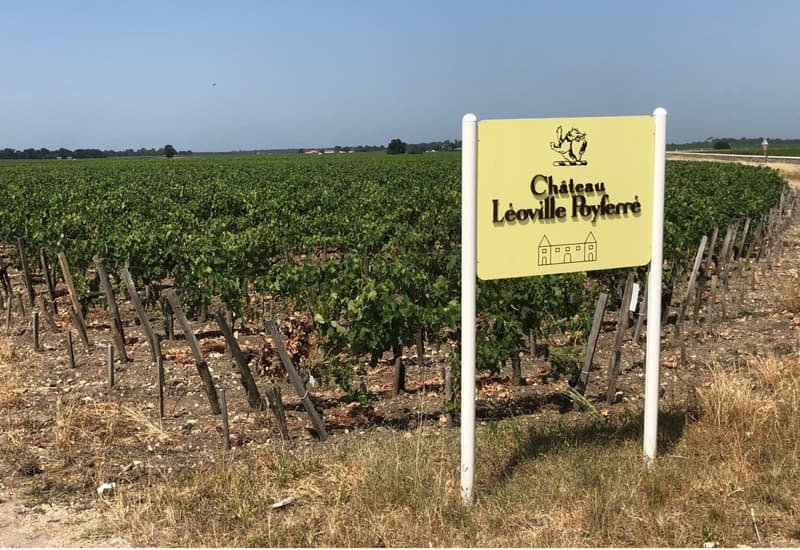
The 50-hectare vineyard of Leoville Barton is situated in the Saint Julien appellation on the left bank of the Gironde river.
The terroir is a unique combination of Garonne gravel over a clayey subsoil which balances the soil temperature and improves water drainage.
Cabernet Sauvignon is the most popular Medoc grape variety in Bordeaux and makes up 74% of the vine plantations at Leoville Barton. The other two varieties grown in the vineyard are Merlot (23%) and Cabernet Franc (3%). Over the years, the estate has steadily increased its Merlot plantings and reduced the Cabernet Franc ones.
The average age of the Leoville Barton vines is about 40 years, while the vine density is 9,100 per hectare. The berries are never green harvested and their vines need timely pruning to reduce yields.
A high percentage of older vines are grown in the vineyard to maintain the characteristic quality of Saint Julien Cabernets. The estate produces its second wine from younger vines that aren’t suited for the Grand Vin.
Leoville Barton follows eco-friendly agricultural practices like ploughing the vineyard and using natural fertilizers. Since 2012, they have steadily upscaled the use of sustainable practices and organic farming at both the Leoville Barton and the Langoa chateaux.
Now, Leoville Barton is known for combining modern sophistication with a traditionalist approach to winemaking.
Read on.
Vinification Processes at Leoville Barton

Here’s what’s unique about the winemaking practices at Château Leoville Barton:
- Harvesting: The grapes are harvested by hand, de-stemmed, and carefully sorted on an optical sorting table.
- Fermentation: The alcoholic and malolactic fermentation take place simultaneously in wooden vats (the process is called co-inoculation.) The maceration lasts for a few days. During this period the juices are poured over the grape skins to enhance the wine’s aromas and tannin levels.
- Running off: Once fermented, the wine is separated from the marc and transferred from the wooden vats to oak barrels.
- Aging: The wine is aged for 18 months in oak barrels. While aging, the barrels are kept filled to the brim to avoid oxidation. The clear wine is separated from the lees, and egg whites are used to absorb all floating sediments.
- Tasting: Leoville Barton has dedicated tasting rooms where expert oenologists determine the wine’s tasting profile. Here, the wine batches are tasted, and their blends are calibrated to reflect the respective terroir.
- Bottling: The fine-tuned wines are bottled around June at the Chateau in Saint Julien.
These meticulous winemaking practices result in a range of well-aged vintages for any discerning wine enthusiast.
Ready to discover the best Leoville Barton wines you can buy this year?
Best Leoville Barton Vintages to Buy in 2024 (Including Taste, Prices)
Here’s a list of some of our favorite Leoville Barton wines:
1. Chateau Leoville Barton, 1949

This is a highly concentrated, full-bodied red wine with harmonious flavors of black fruit, cedar, and tobacco. It is best paired with game, and roasted, braised, and grilled dishes.
Price of Chateau Leoville Barton, 1949: $1234
2. Chateau Leoville Barton, 1961
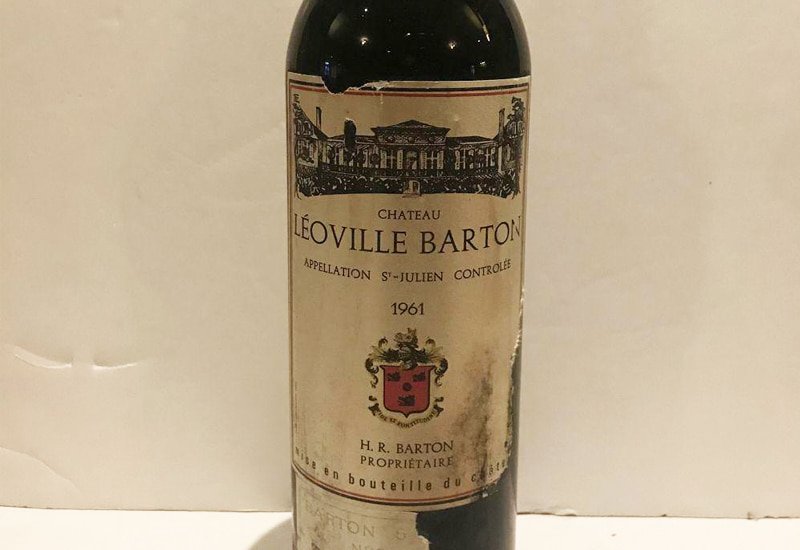
This second growth vintage has tobacco, cassis, and forest floor aromas. It is a mature Bordeaux blend with high tannin levels and fresh tasting notes. The sweet palate makes it a great wine to complement classic meat dishes, beef, pork, and lamb.
Price of Chateau Leoville Barton, 1961: $595
3. Chateau Leoville Barton, 1982

This ruby-red wine has a pleasant acidity. It possesses red fruit aromas of raspberry, redcurrant, and licorice. The wine is quite dry and lean with grainy tannins. It pairs well with Asian dishes and fish courses.
Price of Chateau Leoville Barton, 1982: $303
4. Chateau Leoville Barton, 1990
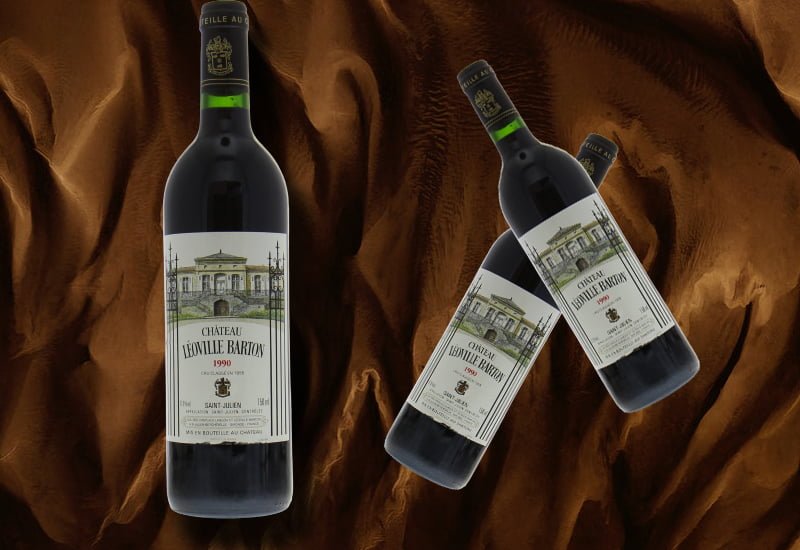
This is the perfect Bordeaux wine with its deep ruby color and intense red fruit and cassis aromas. It has grainy tannins along with a mineral note and is best served after decanting for a couple of hours. This Cabernet Sauvignon-dominant blend wine goes well with tuna, pasta, and mushrooms.
Price of Chateau Leoville Barton, 1990: $208
5. Chateau Leoville Barton, 2000
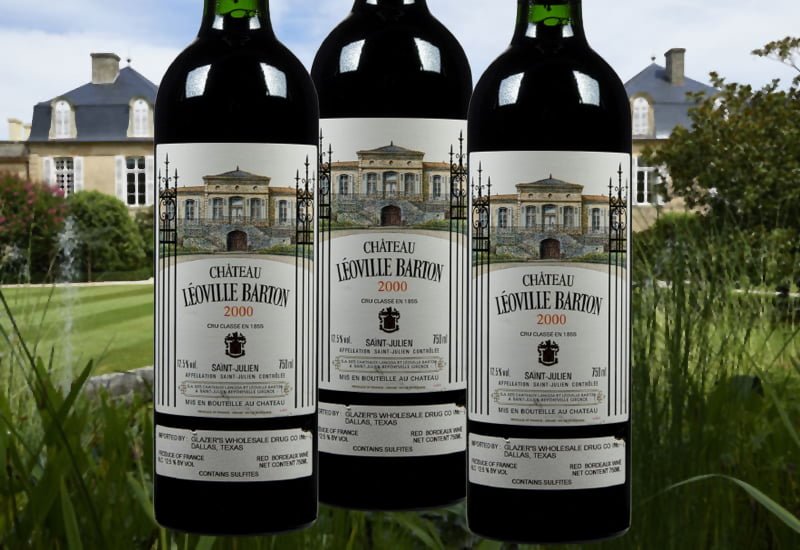
This full-bodied and dense vintage is dark purple in color with tasting notes of sweet cedar, dark chocolate, and fruit cake. These are offset by earthy forest floor and licorice aromas. It is a full-bodied and dense wine.
Price of Chateau Leoville Barton, 2000: $186
6. Chateau Leoville Barton, 2003
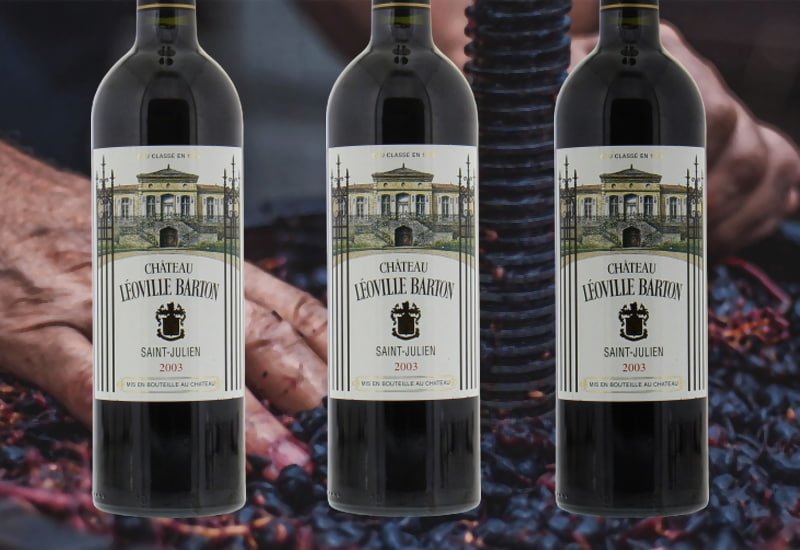
This Leoville Barton wine is a plum-colored complex vintage with a sweet palate. It is a great wine with black fruit, cedar, and forest floor aromas.
Price of Chateau Leoville Barton, 2003: $167
7. Chateau Leoville Barton, 2010
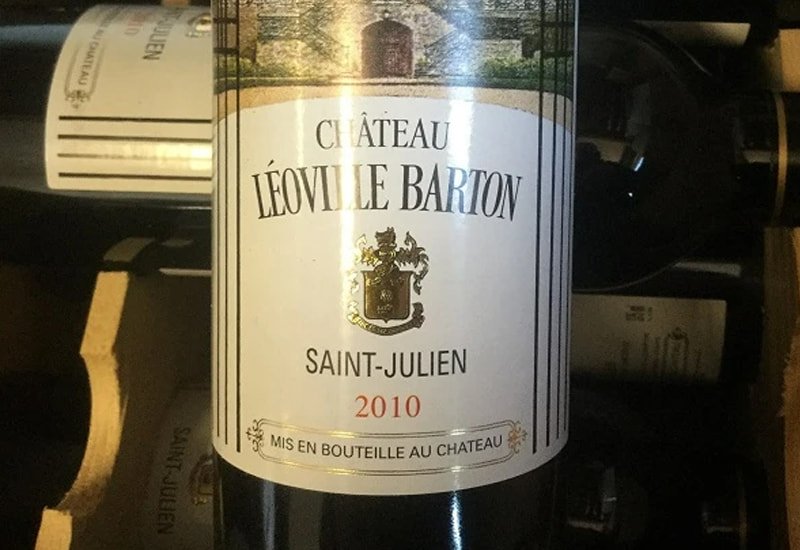
This vintage is savory and full-bodied. It is a balanced red wine with sweet black fruit, nuts, and light vanilla tasting notes. It has a velvety texture, mild tannin levels, and a nose of blackberry, black currant, and violet.
Price of Château Leoville Barton, 2010: $158
8. Chateau Leoville Barton, 2016
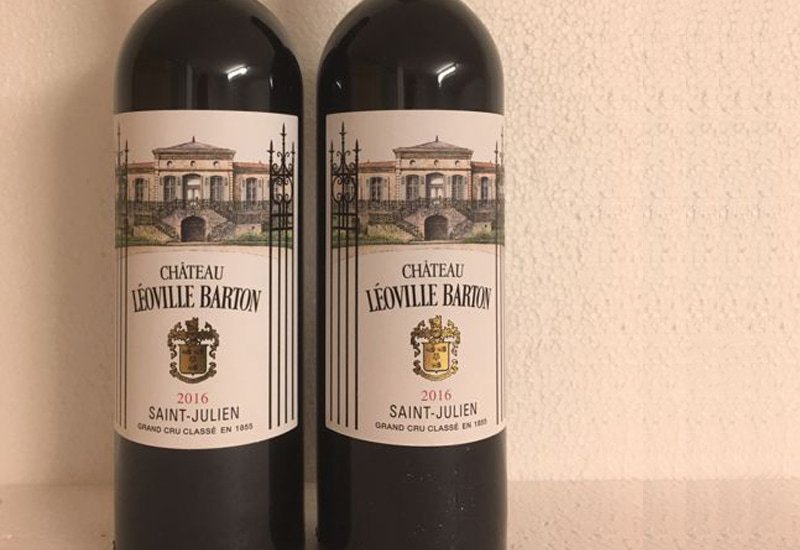
The 2016 Bordeaux is composed of over 85% Cabernet Sauvignon and some Merlot. This vintage has a nose of roasted apple and dark chocolate. The tasting notes include pastis-soaked plum, black fruit, and blueberry paste.
It has an alcohol content of 13%. This iconic vintage of the St. Julien AOC won Wine Spectator’s 2019 ‘Wine of the Year’ award.
Price of Chateau Leoville Barton, 2016: $137
Now let’s see what makes Leoville Barton a great investment choice.
Investing in Chateau Leoville Barton
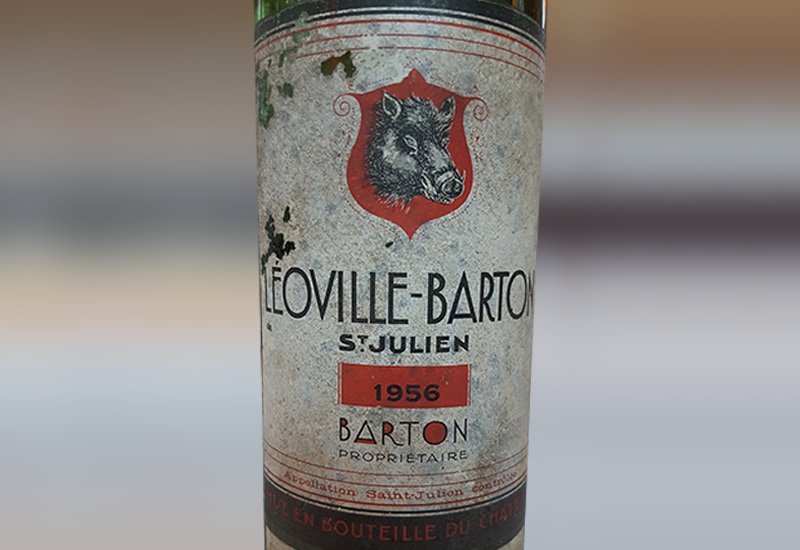
Château Leoville Barton is one of the most sought-after, ageworthy Bordeaux wines. These fine red wines continue to earn effusive praise from famous sommeliers and wine critics. For instance, the 2003 vintage received 95 points from Robert Parker and 98 points from James Suckling.
The wines can age beautifully for at least a decade. Most vintages reach maturity only after 20 or 30 years.
These Super Seconds aren’t as pricey as the First Growths, and they’ll fetch you more than other Second Growths when you sell them. In fact, they’re some of the best value wines in the St. Julien appellation and have also shown a steady price appreciation over time.
For instance:
- The pricing of Chateau Leoville Barton 1991 increased by about 49% from $88 to $131 from 2019 to 2020.
- Château Leoville Barton 1987 grew by 48% from $79 to $117 in just two months (August 2020 to October 2020.)
Also, here are some exciting auction results for Château Leoville Barton:
- At a Sotheby’s auction in 2020, a 12-bottle collection of the 1989 Château Léoville Barton sold for $1,334.
- A 12-bottle collection of the 2000 Chateau Leoville Barton sold for $1,976 in 2019 at Zachys.
- At a 2019 Sotheby’s auction, a 12-bottle collection of the 1996 Château Léoville Barton sold for $1300.
- A 3 bottle case of the 1986 Chateau Leoville Barton sold for $267 at a 2020 Chiswick Auctions.
Some of the Chateau Leoville Barton vintages are available En Primeur, which means you can buy the wines when they are still in barrels. This is a great way to secure limited quantity vintages.
So how do you go about investing in this Grand Vin?
Vinovest would be your best bet!
Buy Leoville Barton and Other Collectible Wines Through Vinovest

Vinovest is a wine investment company that helps you build a profitable portfolio of premium wines that historically outperform the market.
And if you ever wish to have one of the wines delivered to your doorstep instead, Vinovest will ensure hassle-free shipping. A win-win like no other!
How Does It Work?
- Sign up with your name, email address, and password to create your account on Vinovest.
- Determine your investing style by answering a few questions.
- Add a minimum of $1,000 or more to your account.
- Vinovest’s algorithm will find the ideal investment wines for you based on your answers. Now you are just a click away from starting your wine investment journey!
Why should you use Vinovest?
Benefits
It offers a range of benefits for wine enthusiasts, buyers as well as investors. Some of these include:
1. Easy Buying and Selling Using AI-driven Technology
Vinovest’s Artificial Intelligence-driven platform makes it super easy to buy and sell fine wines like Château Leoville Barton from around the world.
2. Best Prices
Your favorite wines are available at the best possible prices. Vinovest buys authentic wines directly from trusted winemakers, wine exchanges, and wine merchants, eliminating the retail mark-up.
3. Curated Portfolio by an Expert Wine Advisory Team
Not a wine specialist? No worries!
Vinovest’s team of expert sommeliers and data scientists will guide you to build a high-performance portfolio of collectible wines, including En Primeur bottles.
4. Authenticity and Provenance
Vinovest ensures that each wine you buy is authentic by tracing its provenance before you make your purchase.
5. Optimal Storage
Vinovest stores your wine collection in bonded warehouses near the best wine-growing regions in the world. The storing facilities maintain optimal temperature, light, humidity, and vibration levels all the time.
This way, you have easy access to a wine cellar without having to go through the financial or logistical hassle of maintaining one yourself.
6. Comprehensive Insurance and Security
With Vinovest, you get a full insurance policy at market value. All storing facilities are equipped with 24/7 security cameras that keep watch over your wine collection.
Power backups at the warehouses maintain ideal conditions in case of a power failure.
7. Low Overall Costs
You may wonder if such superior benefits come with hidden costs. But these high-end services are available at fairly reasonable prices.
Vinovest charges a 2.5% annual fee, which becomes 1.9% when the balance of your portfolio is over $50,000. This includes wine buying and selling, wine fraud alert, storage, insurance, and active management of your portfolio.
8. Tax Advantages
Vinovest charges no excise duty and VAT for its world-class wine storage facilities. As a result, this substantial tax advantage is passed on to you.
Add a Coveted Chateau Leoville Barton to Your Wine Collection Today!

Chateau Leoville Barton offers exceptional wines that could be excellent additions to your cellar. You can savor these red wines with a hearty meal or earn good returns (in the long-term) by investing in them.
If wines from Leoville Barton and other prestigious Grand Cru Classe chateaux interest you, wait no more. Take the first step towards wine investing and sign up with Vinovest today!
